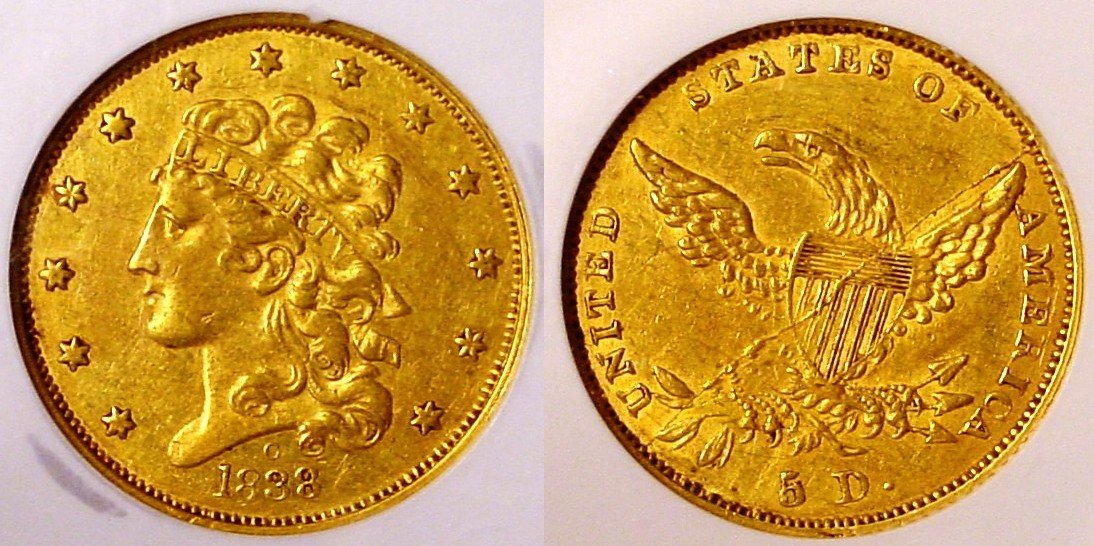A Closer Look: The Charlotte Mint
Posted by Toby Adkins, Numismatic Scholar for currencyandcoin.com on Aug 26th 2021
The Charlotte Mint is relatively unknown to a large group of modern coin collectors. It is a storied mint. It is filled with history. Charlotte Mint coins are prized by antique coin collectors everywhere. It's relatively short run (1838-1861) also means Charlotte coins are rare. Also pricey! What is it's story?

Everyone is familiar with the California Gold Rush and certainly the San Francisco 49'ers! We've seen the movies and heard the stories and lore. All of this attention has most people thinking it was the first gold rush in America. It was not the first nor the last. You may have guessed already but the first United States gold rush was in non other than North Carolina.
As early as 1799, gold nuggets had been found in North Carolina and by the early 1800's the word was out. In fact, the very first documented gold mine in the United States is here. The rush was on. Unfortunately for the gold miners, the closest way to turn their gold into money was after a long, dangerous trip... to the U.S. Mint in Philadelphia! In 1824 alone, over 2,500 ounces of gold was deposited in the Philadelphia Mint from North Carolina mining.
In 1828 gold was also discovered in Georgia and the Philadelphia Mint realized there was a problem. They needed gold to produce our Nation's coins but there was just not a good way to move the gold to the Philadelphia Mint. So the answer? Don't move the gold to the Mint, move the Mint to the gold! That's just what happened. In 1835, 3 branch mints were authorized for production. They were to be located in: Charlotte, NC - Dahlonega, Ga - and New Orleans, LA.
The Charlotte Mint would start striking coins 1838 with a single "C" for their mintmark. Since this was a GOLD rush, Charlotte and Dahlonega only produced gold coins, all other mints have produced a variety of metals. The Charlotte Mint is also the only mint to only coin just three denominations of coins. Since the coins were being produced for immediate use, the $1, $2 1/2, and $5 coins made this most sense. Your common person was not using $10 or $20 coins prior to the Civil War.

The Charlotte Mint would strike small amounts of coins up until 1861 when North Carolina seceded from the Union due to the Civil War. During the remainder of the Civil War, the Mint would be used as a Confederate military office and even a hospital. Later it would used as an assay office and also served as a Red Cross office during WW1. In 1931 is was slated to be demolished to make room for the new post office. It looked like the end of the Charlotte Mint. However, a group private citizens purchased the Mint structure from the U.S. Treasury Department and relocated the Mint structure in 1935. It was turned into the Mint Museum of Art and today has a full collection of Charlotte Mint coins.
Due to the rarity of Charlotte minted coins, they are prized by antique gold collectors the world over. The addition of the little "C" adds the historical value and the knowledge of how rare the Charlotte Mint's coins have become. Now that you know "the rest of the story" maybe one day you will collect your own Charlotte coins... I wish you luck!

